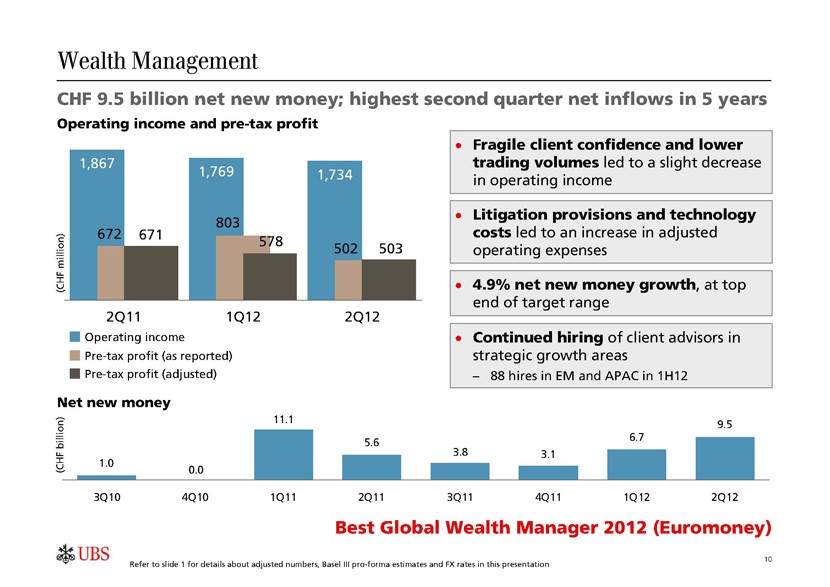Assess Shareholder Wealth With EPS_1
Post on: 13 Апрель, 2015 No Comment

The second EPS component is the share count, or the number of common shares issued by the company and still in circulation. We use share count as the denominator in the EPS calculation as a method to measure the common shareholder’s claim to income on a per-unit basis. In other words, EPS is the amount of income attributable to one share of common stock. By examining the company’s earnings in this way, investors can measure the value of earnings that they own in addition to the company’s earnings as a whole.
While this concept seems simple enough, the denominators used in the EPS calculations for stocks are quite complex. The first complexity is that nearly all share count figures used in EPS calculations are time-weighted averages. As companies issue shares or buy back shares over time, the weighted average share counts change accordingly. Therefore, investors should consider when share issuances took place during a fiscal period to estimate how the average number of shares might change in the next fiscal period. For example, if a company issues a large amount of stock near the end of a fiscal period, the average share count calculation could be significantly larger in the next fiscal period.
Types of EPS
Also, more than one type of EPS is presented on companies’ income statements. The differences between these types arises from different share count calculations. The first type is simple, or primary, EPS, which excludes the effects of potential share issuances from options and warrants. although it considers the effects of convertible securities like convertible bonds. In comparison, fully diluted EPS considers the effects of potentially dilutive exercises of options and warrants that result in new shares and capital inflows to the company.
Under U.S. Generally Accepted Accounting Principles (GAAP), companies are required to present both types of EPS on their income statements. Because the fully diluted share count includes potential new common shares, it is larger than the simple share count when options and warrants are present. Therefore, fully diluted EPS is generally a smaller number than simple EPS. An exception to the rule occurs when the company is not profitable. In the loss scenario, we do not consider the effects of new shares from options and warrants because it reflects a smaller loss attributable to common shareholders. In accounting parlance this reflects anti-dilution. which is generally prohibited by U.S. GAAP.
A third complexity is the treasury stock method used to calculate the fully diluted share count. Under this method, accountants assume that proceeds from the exercise of in-the-money options and warrants are used to buy back common shares in the open market. Therefore, fully diluted share count is not a straightforward weighted average calculation; it is actually a lower number of shares than the average of all shares and all potential shares from the exercise of options and warrants.
Lastly, it is important for investors to keep in mind that simple and fully diluted share counts usually differ significantly from the actual number of shares issued and tradable on a stock exchange. The number of issued and outstanding shares, which is generally stated in the balance sheet’s equity section, does not include the effects of convertible securities or dilutive options and warrants. It is also not an average – it is the number of shares issued and outstanding on the balance sheet’s date. Smart investors should consider all three share count calculations when forming opinions on stocks.
Note that most analysts and other stock market types consider a fully diluted share count to be an analytical standard. When Wall Street analysts talk about their EPS projections, they are almost always referring to a fully diluted EPS projection.
Importance of EPS
EPS is important to company analysis because it measures profitability on a per-unit basis in the same way that a share price is a per-unit measure. Because we generally assess share price and value based on one share of stock, it is helpful to look at financial measures in the same way. EPS is the measure of income belonging to one share of stock. Unless we are buying entire companies, EPS (and other per-share measures) is useful in forming opinions about the value of equity investments.
P/E and EPS
It is hard to read any financial publication or watch CNBC without seeing chatter about price to earnings (P/E) ratios. This is the current price of a stock divided by some EPS measure. P/E ratios are used widely to value stocks and predict future stock prices, which makes EPS a highly important measure for common stock evaluation. Analysts often use financial models to project EPS for some future time period, which involves projecting both income and the complex share count figures. Analysts then multiply the EPS projection by some projected P/E ratio to arrive at a target price for the stock. These target prices often drive recommendations on stocks.
All else being equal, the only way to grow the individual shareholder’s claim to profits — and generate return on investment — is to increase EPS. Increasing income alone is not enough. If the company issues a lot of stock and common stock equivalents over time, EPS may not increase (indeed, it may decrease) even though income has been rising. Therefore, company management teams must make appropriate decisions to both maximize profitability and keep a handle on share issuances at the same time.
The Bottom Line
In general, EPS growth is a standardized barometer for how well the company has grown shareholder wealth over time. A quick and easy way to assess this shareholder wealth creation is to compare revenue growth and EPS growth over the same time period. In general, if EPS has grown at a faster percentage rate than revenue, then management has done its job of creating shareholder wealth.














